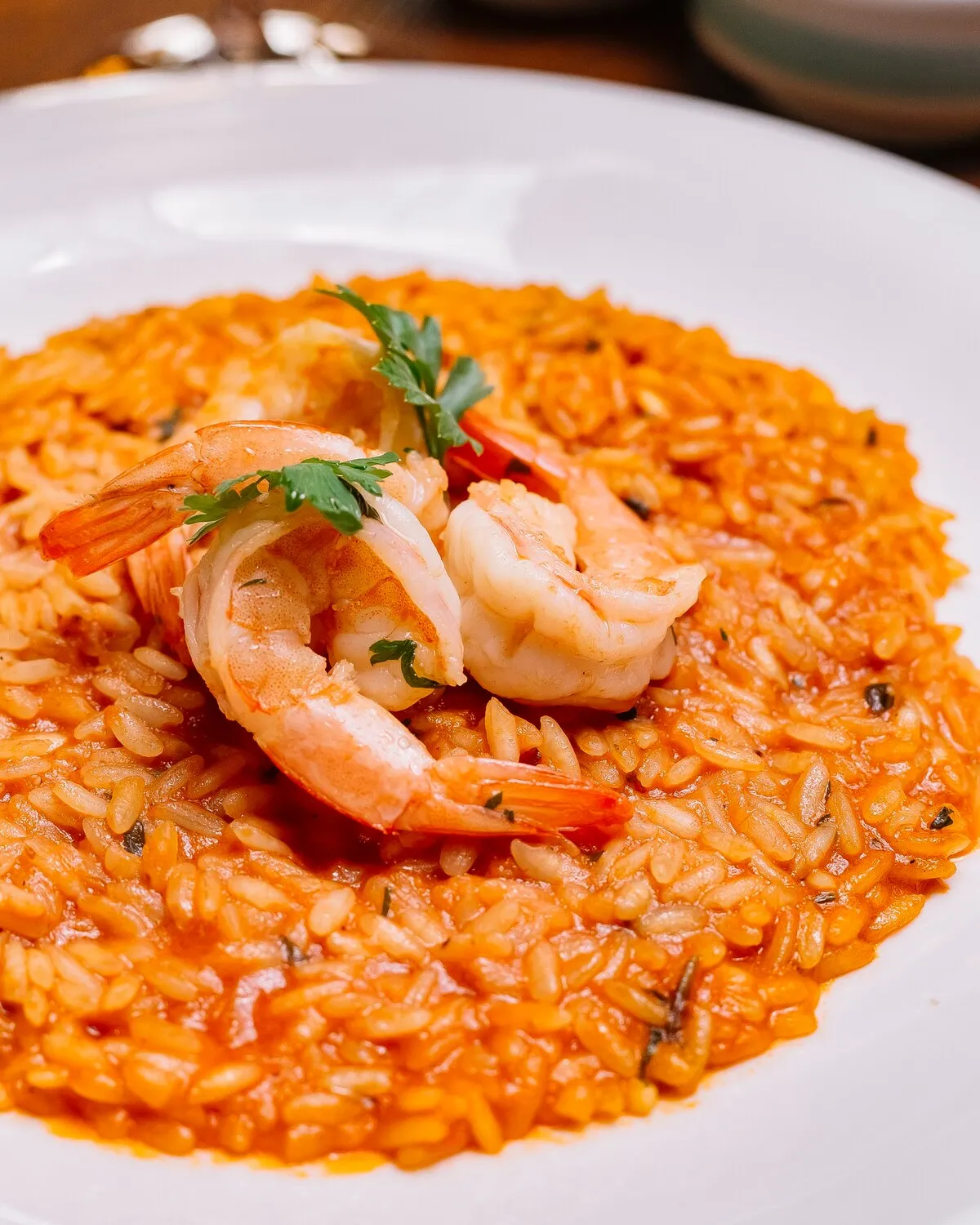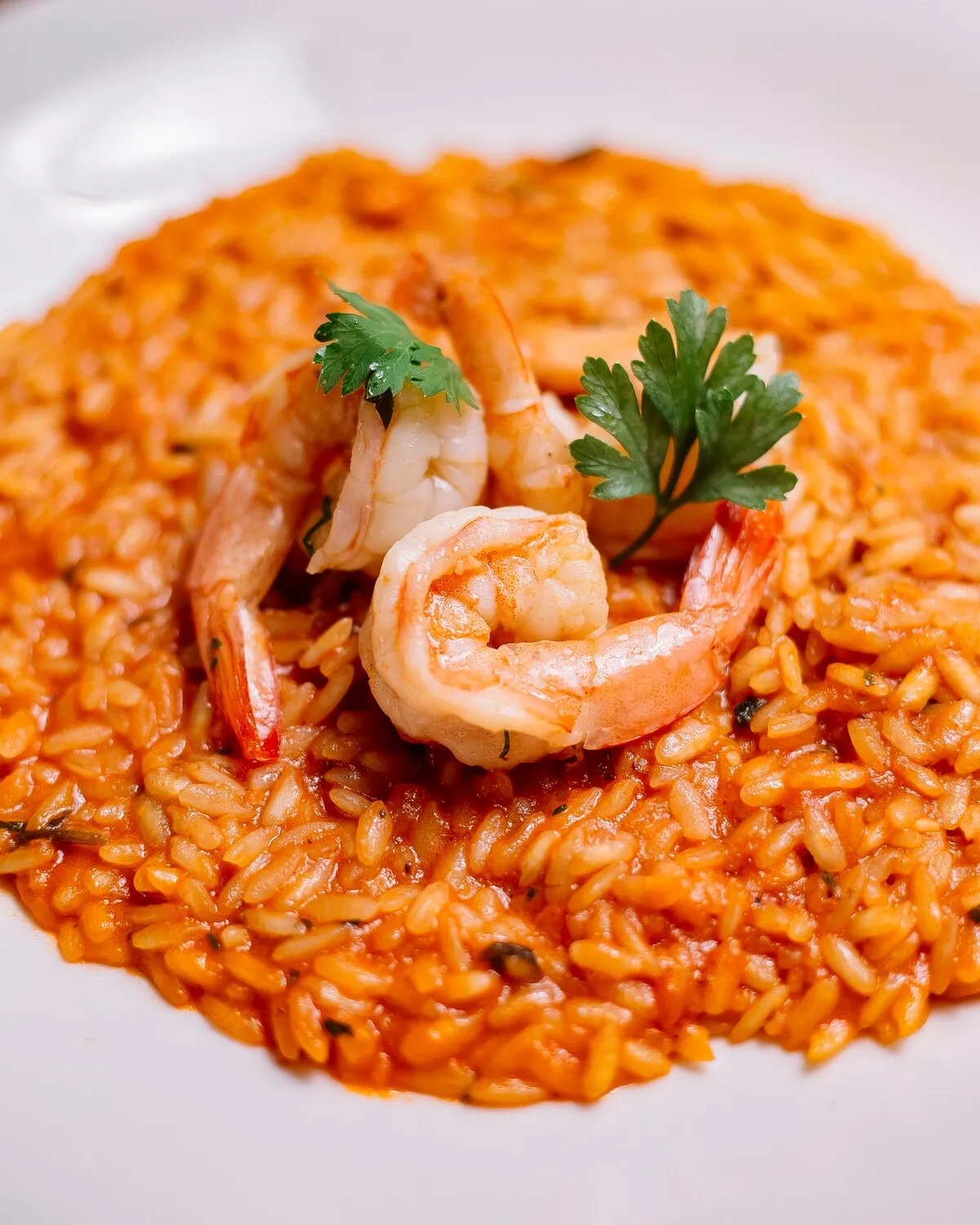
Risotto ao Funghi
Creamy risotto with a rich mushroom flavor.
Nutrition Facts
* The % Daily Value (DV) tells you how much a nutrient in a serving of food contributes to a daily diet. 2,000 calories a day is used for general nutrition advice.
Risotto, in general, evolved as rice cultivation spread through Italy, particularly in the northern regions. The introduction of Arborio rice, ideally suited for absorbing flavors and creating a creamy texture, was crucial. The addition of foraged mushrooms, a staple in Italian cuisine for centuries, transformed simple rice dishes into flavorful and sophisticated meals.
Risotto ai Funghi is often enjoyed as a first course (primo) in Italy, representing a comforting and elegant dish that showcases the natural ingredients of the season. Its preparation is often a social activity, with the cook continuously stirring and adding broth while interacting with family or friends.
Seasonal Ingredient
Risotto ai Funghi is strongly associated with the fall season, when many varieties of wild mushrooms are at their peak. The dish reflects a connection to the land and the bounty of nature.
Family Meal
The act of preparing risotto is often a shared experience within Italian families, passed down through generations. It is a dish that brings people together around the table.
Regional Variations
Different regions of Italy have their own variations of Risotto ai Funghi, using locally available mushrooms and cheeses. This regional diversity adds to the richness and complexity of Italian cuisine.
Risotto ai Funghi is characterized by its earthy, savory, and umami-rich flavors, derived primarily from the mushrooms. The creamy texture, achieved through the gradual addition of broth, complements the robust fungal notes.
The primary flavor profile is dominated by the mushrooms. Different types of mushrooms contribute varying levels of earthiness and depth. Porcini mushrooms are highly prized for their intense flavor, while other varieties like cremini, shiitake, or oyster mushrooms can be used alone or in combination. The dish also features the savory notes of the broth (typically vegetable or chicken), the sharpness of grated Parmesan cheese, and the aromatics of garlic and onion. Butter and white wine further enhance the richness and complexity.
Rice Selection
Use a short-grain, high-starch rice variety like Arborio, Carnaroli, or Vialone Nano. These rices release starch during cooking, creating the creamy texture that is characteristic of risotto.
Broth Temperature
Keep the broth warm throughout the cooking process. Adding cold broth will lower the temperature of the rice and can result in a gummy texture.
Stirring Technique
Stir the risotto frequently, but not constantly. This encourages the rice to release its starch and prevents it from sticking to the bottom of the pot. A gentle and consistent stirring motion is ideal.
Mushroom Preparation
Sauté the mushrooms separately before adding them to the risotto. This allows them to develop a deeper flavor and prevents them from becoming soggy during the cooking process. Also, reserve some sautéed mushrooms for garnish.
Final Mantecare
At the end of cooking, remove the risotto from the heat and stir in butter and Parmesan cheese. This final step, known as 'mantecare,' creates a luxurious, creamy finish.
Explore additional Risotto dishes and restaurants
Explore RisottoDiscover top dining spots and culinary experiences in Foz do Iguaçu.
Explore Foz do IguaçuLearn more about the food culture, restaurant scene, and culinary heritage of Brazil.
Explore Brazil
